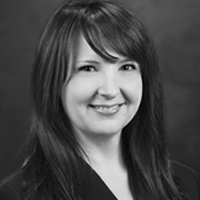Editor's Note: The content of this article was published by Pearson in the journal EBP Briefs. It is offered for CEUs through SpeechPathology.com in cooperation with Pearson.
Clinical Scenario
Eleanor is a public school speech-language pathologist working in a large and growing suburban district. Her caseload consists primarily of children with language and learning difficulties, though she is seeing an increasing number of children with reading concerns, as well as children on the Autism spectrum. She splits her time between the middle school and high school buildings and works hard to face the challenges of her large and varied caseload.
Early each school year, Eleanor conducts screenings of children who are entering middle school to identify those who may be in need of speech and language services. She is acutely aware of the importance of good communication skills for children’s educational and social development, and she wants to ensure that these incoming students have the best opportunity to succeed in their new setting. She always strives to provide optimal service for children with speech and language impairments, in accordance with the requirements of the Individuals with Disabilities Education Act (IDEA; United States Congress, 1997; United States Department of Education, 2006), and the American Speech-Language and Hearing Association (ASHA) Code of Ethics (ASHA, 2003) and Scope of Practice (ASHA, 2001).
This year, Eleanor is facing a unique challenge. On her screening schedule is a new fifth grade girl with a history of stuttering. The child, Emily, has been receiving treatment since she was in preschool, yet she still stutters severely and has difficulty communicating at school. Parental reports and prior treatment summaries indicate that Emily is able to use various modifications to enhance her fluency while she is in the therapy room, though she rarely, if ever, uses such techniques in the classroom or at home. Of particular concern is the fact that Emily’s behavior at school has started to change. Once an outgoing and friendly girl who regularly and enthusiastically contributed to class discussions, Emily has become quiet and taciturn. She is reluctant to participate in class activities and no longer raises her hand to answer questions. She sits alone at lunch and rarely calls her friends on the phone after school. When asked about these changes, she says that stuttering is embarrassing, so she finds it easier to just not talk. When asked why she does not use the techniques she has learned in therapy, she states, “they’re just too hard” and “they don’t really help.” Although the school year has just begun, Emily’s parents have already contacted Eleanor twice asking how the new clinician will help their daughter. The teacher has also asked what to do about Emily’s speech in the classroom.
Unfortunately, like so many other speech-language pathologists, Eleanor does not feel confident in her skills for helping children who stutter (Brisk, Healey, & Hux, 1997; Cooper & Cooper, 1996; Kelly et al., 1997). She recalls some of the information presented in her graduate class on stuttering, but she has worked with very few children who stutter in her career. As a result, she is uncertain about how to approach this situation. She knows that children can learn techniques that improve their fluency, but she also knows from talking with other clinicians that generalization of such skills can be particularly challenging.
Because she understands the importance of the research base in making clinical decisions, Eleanor decides to consult the literature to help her identify an appropriate treatment. She recalls from graduate school that there is a wealth of research in fluency disorders. In fact, the sheer size of the literature causes trepidation as she approaches this case. She knows that she cannot possibly evaluate all of the treatment studies on school-age children who stutter, but she also knows that she can simplify her search for evidence by employing the principles of evidence-based practice (EBP). Specifically, she can: (a) pose a well-formed clinical question, (b) search the literature for relevant evidence, (c) evaluate the quality of the evidence she finds, and (d) make a clinical decision based on the evidence (ASHA,2005).

